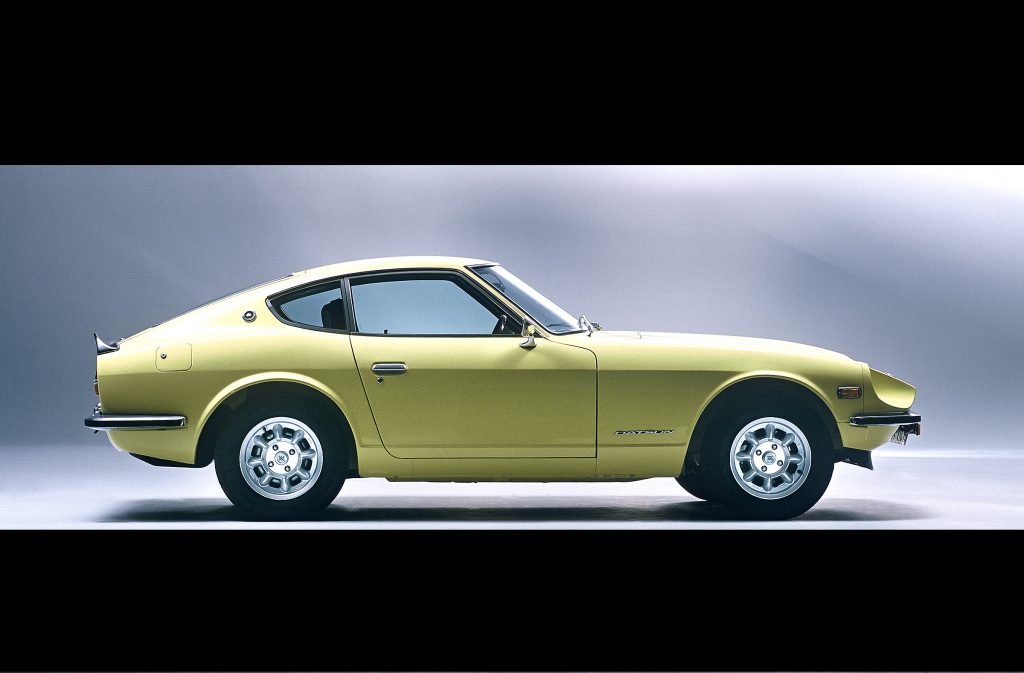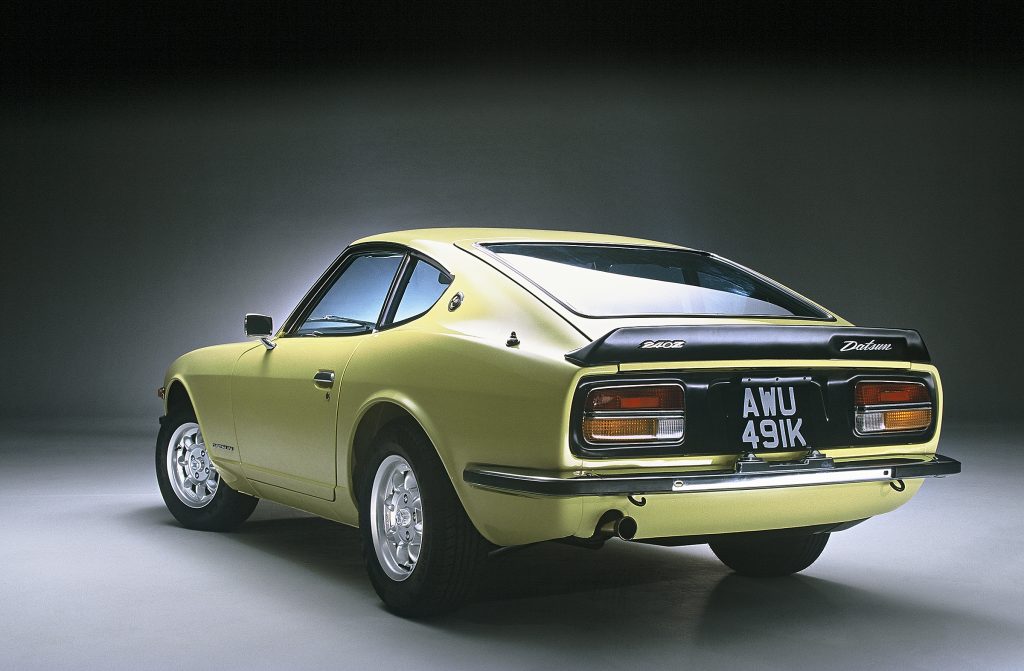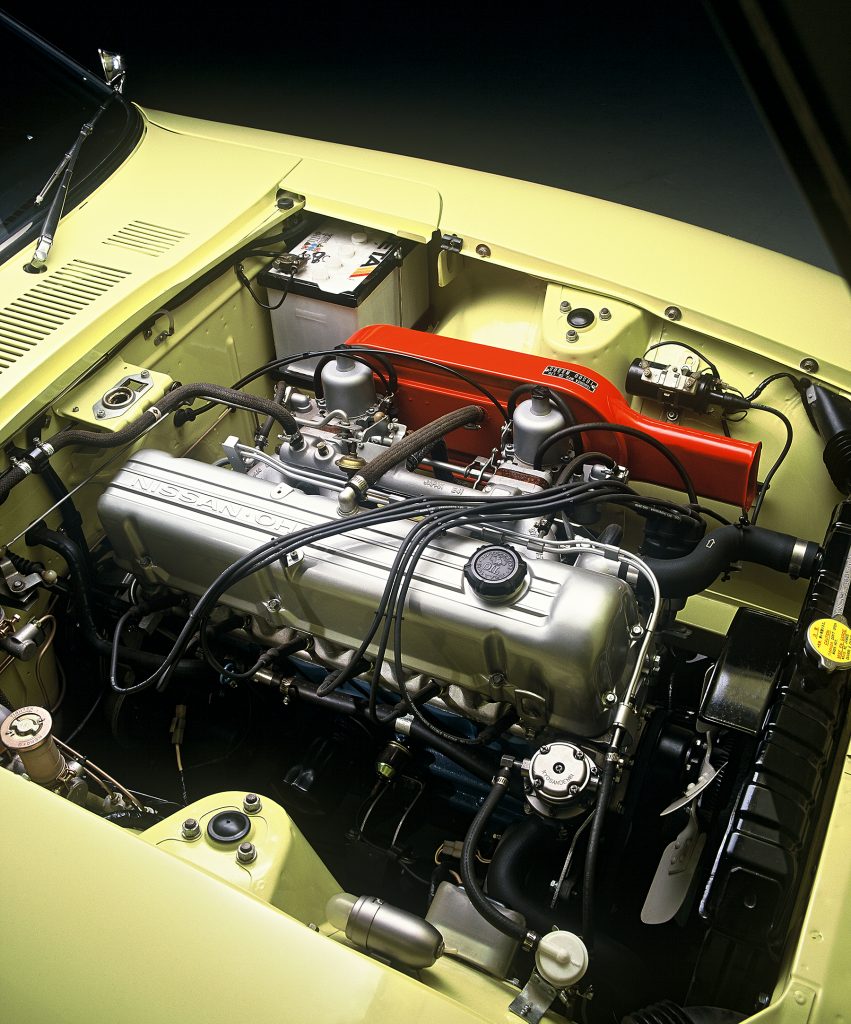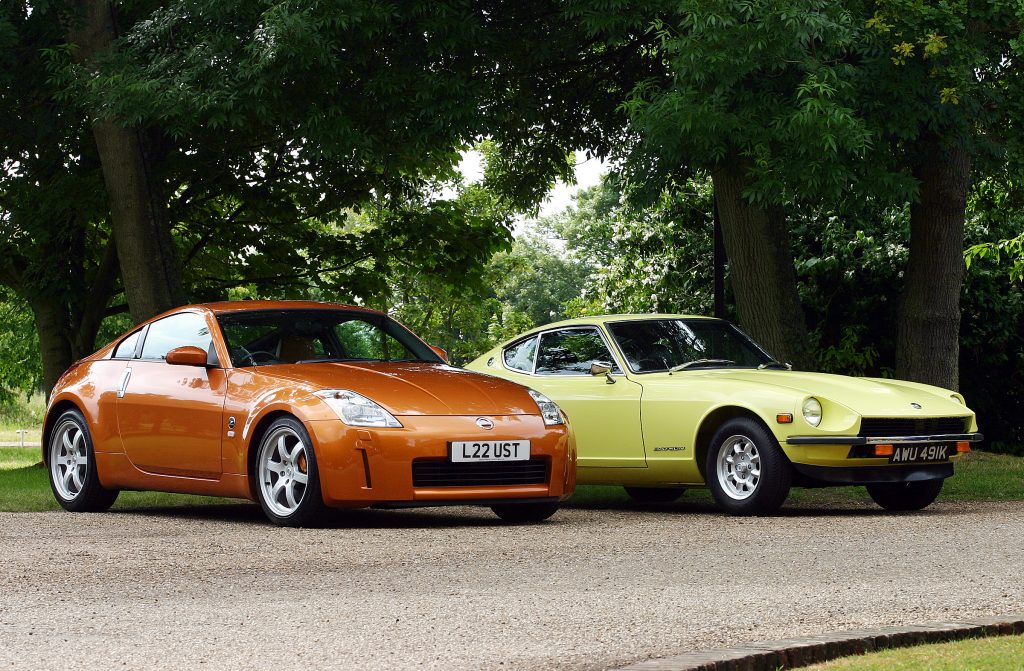They say time flies when you’re having fun but how on earth is Nissan’s original Z car turning 50 this year? The sports car that put an MGB-GT and Jaguar E-Type to shame and put Japan on the map with the world’s car enthusiasts could almost pass for something half that age, yet here it is celebrating its golden anniversary. And it is more desirable than ever.
The 240Z had a lot of things going for it when it was introduced to the world 50 years ago, and went on to strike gold for Datsun. It also had a number of barriers it needed to cross – or get around – in order to generate the kind of sales its Japanese creators envisioned.

Certainly, in America, thanks to Yutaka Katayama, then President of Nissan-USA, the forecasts for strong sales was spot on. They remained so for nearly two years after the car’s launch, with waiting lists present throughout the country.
What was not to like about this sporty, beefy little two-seater? For one thing, its design was sleek with a very edgy fastback roofline. Performance came from a well-proven, 2.4-litre straight-six engine that was virtually indestructible, coupled to a highly reliable four-speed transmission. The car’s handling – with a little tail-wagging thrown in with appreciation – was superb and build quality was impressive. The name chosen for America – 240Z – was much more acceptable than “Fairlady,” favoured in the Japanese homeland, and Z-mania painted much of the American landscape for the first part of the 1970s.

Of course, the barricades were significant as not many Japanese sports cars existed in the U.S. at the time. Japanese imports were primarily confined to econoboxes – four door, high-mileage compacts that were easy on the wallet but a little hard on the eyes. Nissan – then known as Datsun – nevertheless wanted to serve as many market categories as it could, and had previously introduced a sprite little ragtop called the 1500 Sports (also called Fairlady in Japan), which grew into the 1600 and later the 2000 Sports, a small, lively two-seat convertible that was the manufacturer’s first sporty entry into America.
The second barrier that the company faced was perception. Could a sports car from Japan really do well in the U.S., the land of cynics, of powerful V8s and made-in-Detroit mentality? The answer, we now know, was a categorical “yes.” Priced smartly, thanks to Katayama (known as “Mr. K”), who understood what the American buyer could logically afford, the 240Z had a sticker that was acceptable, keeping it lower than a Corvette, but just a “smidge” more than an MGB-GT (by $200.00), a car that Datsun felt was a logical competitor.
America’s youth offered buying power, unmatched by any previous generation
The third concern of executives was the age of the buyer. In 1970, would a young person find a rationale to buying this car? Was there a purpose for its existence among today’s youth weaned on hot rods and drag racing?

Again, the answer was “oh yeah, man.” If there was one thing America’s youth offered – and that of young people around the world – it was their buying power, unmatched by any previous generation. The 1960s had changed the way people thought. Britain could take credit for much of it, with the incredible cultural change brought on by the Beatles (and essentially, the entire British invasion of rock ‘n roll) and the ascension of both the counterculture and the market strength of the younger generation. Soldiers coming back from Vietnam found the 240Z spoke to them and helped them define their independence. They didn’t want to drive their dad’s hand-me-down Buick; they had enough money to afford this little two-door hardtop from their local Datsun dealer and they wanted the freedom to express themselves.
The Z became known as the car that embodied “a Jag hood and Porsche performance” for far less “bread” (or pounds or yen) than anything else on the market. And while its competitors – sadly, that included many British makes – languished in their respective showrooms, the Z sailed out of its. Total sales weren’t Ford Mustang numbers, but for a brand new Japanese import, it was a staggering sum.

Which brings us to the second half of this story, the UK market. Datsun/Nissan had a much slower start in Britain, which is perplexing. A right-hand-drive market should have made importing the Japanese model far easier.
Yet, British buyers were unaware of the Datsun brand. The Fairlady Roadster – the predecessor ragtop to the 240Z – was never officially sold in Britain. Datsun didn’t even arrive in England until 1968 when it first introduced what was called the 100A (known in Japan as the Cherry) as a two- and four-door saloon, along with a coupe and a small estate (what we Yanks call a van), which was logically badged “Van.” (Keep it simple, right?)
Buoyed by its initial success, Datsun dipped its toes further into the British isle by bringing in the 240Z. Only here, as in most English-speaking countries, the letter Z is more commonly pronounced “Zed” vs. in the U.S. where it is “Zee.” Calling it a 240Zed didn’t seem as appealing, so in many cases, it was referred to as the 240 Coupé, with the accent clearly marked on the “e.” That may have allowed pronunciation as “cou-pay,” but it didn’t matter.
In Britain, protectionist tariffs levied against Japanese imports meant few could afford the Z
The problem was that few buyers could afford for the Z, Zed, or Coupé because the car was pricey, thanks to duty (aka “protectionist tariffs” levied again Japanese imports) and transportation costs that were added on compared with the lower, localised pricing of an E-type, for example.
Nevertheless, Datsun introduced the Z in October 1970 at the Earls Court Motor Show and while reaction was encouraging, it did not become a big seller. According to Richard Heseltine, writing in the May 2007 issue of Motor Sport, “a small if select retinue in Great Britain were attracted to the car, with even the legendary Donald Healey reputedly a fan.”
Fact is, there were many fans, and those who could afford one, purchased the new sports car. Over time, the number of Z-cars in the UK have increased and sales of Datsun – now Nissan – products increased as the years progressed.

Some media and enthusiasts will say that the Z was timed right for the world when it launched in late 1969 through 1970, depending on the country. Competition was keen, but within its segmented niche – particularly in the UK, there were few, perhaps the MGB, TR6, even the E-Type. Within Europe, there was the Opel GT. Others would argue that the Z was the modern-day successor to the Healey.
Fortunately, the Z has endured, and like some of Britain’s finest examples – the E-types and Healeys in particular, which have increased in value over the last several decades – slowly, perhaps even painstakingly, the early 240Z has begun to acquire a certain cachet of its own, and that has played out into rapidly escalating prices within the market.
Recent activity among several auction houses, including Bring A Trailer, where an original 240Z sold for $310,000 (about £238,000 at the time) has demonstrated that some of the rarer versions – those sold in the UK along with others possessing low VINS and a select number of the 39 Vintage Zs that were restored by Nissan in the mid-1990s and then sold to the public – are fetching high prices and it’s about time.
As the Z turns 50, it is finally getting its recognition and those who are fortunate to find themselves in possession of one, be it an early model even up to today’s offering, will know that their asset – their machine – if it has been maintained properly over time, will continue to appraise in value, as well as stature, as one of the finest sports cars ever built.
It proved a shrewd investment for Datsun, pleased hundreds of thousands of enthusiasts and changed the way the world viewed Japan’s car industry.
Pete Evanow is the author of Z: 50 Years of Exhilarating Performance, published by Motorbooks International. Click here to view on Amazon. He has worked extensively in motor sport, including the IndyCar series, and ran Nissan’s Z Store, overseeing the restoration of 240Zs for Nissan in America .
















A great car and a very important one for Datsun/Nissan, but surely not the original JDM sports car, what about the Honda S360/500 (1962) and the Toyota S2000 (1967)? The 240Z was a great success in the US but vastly overpriced at it’s UK launch, at about the same price as a Jaguar E Type.
Oh my! I had a ZX Targa in silver with pale grey leather. How I loved it. Unfortunately, some toerag pinched it from our garage and wrecked it.